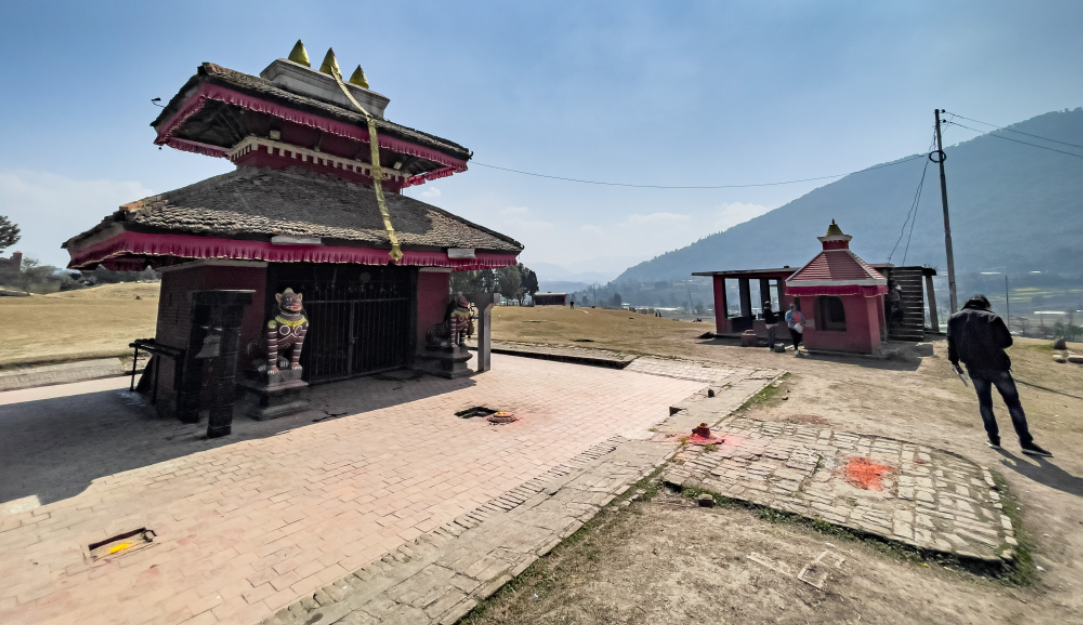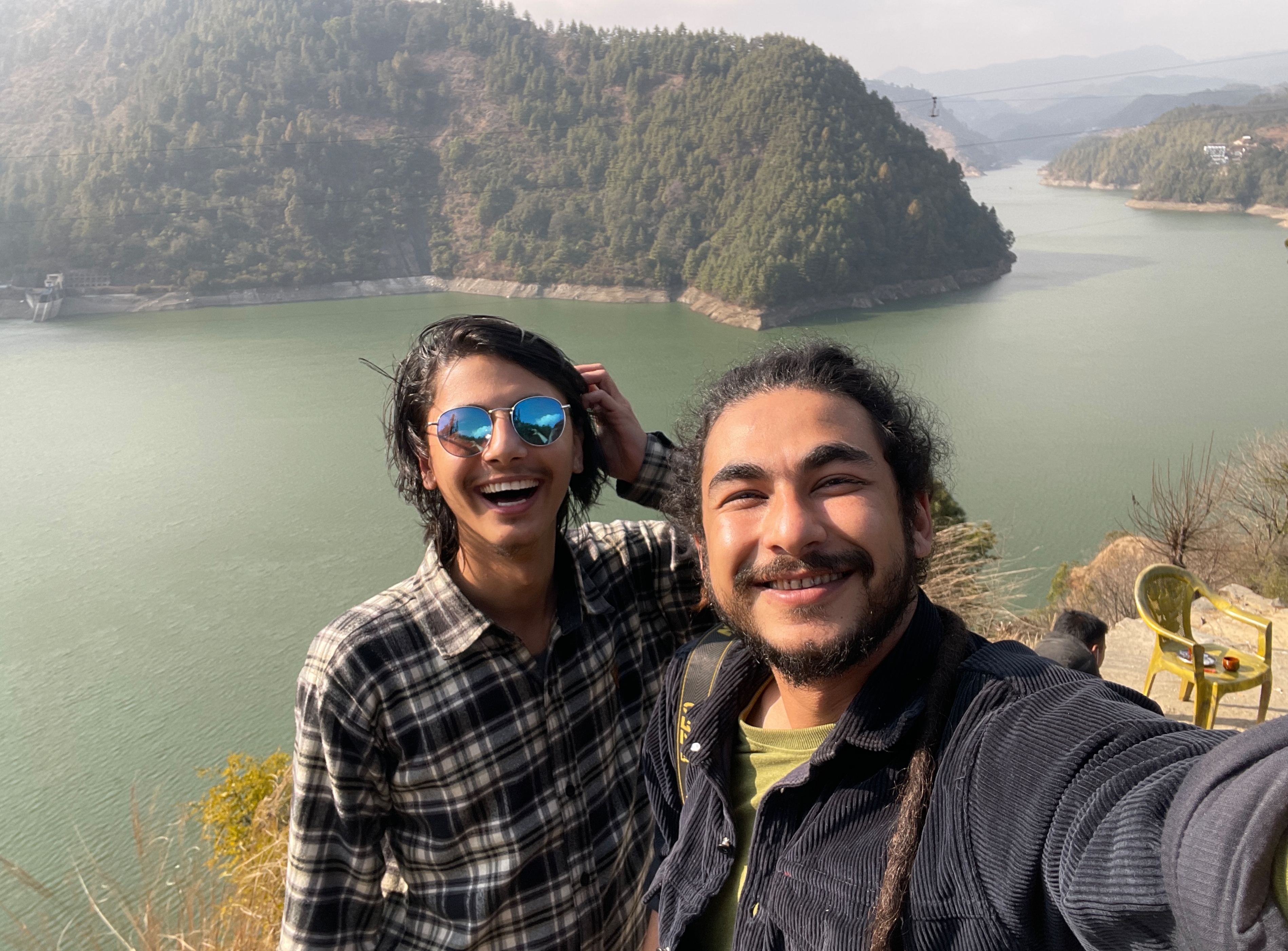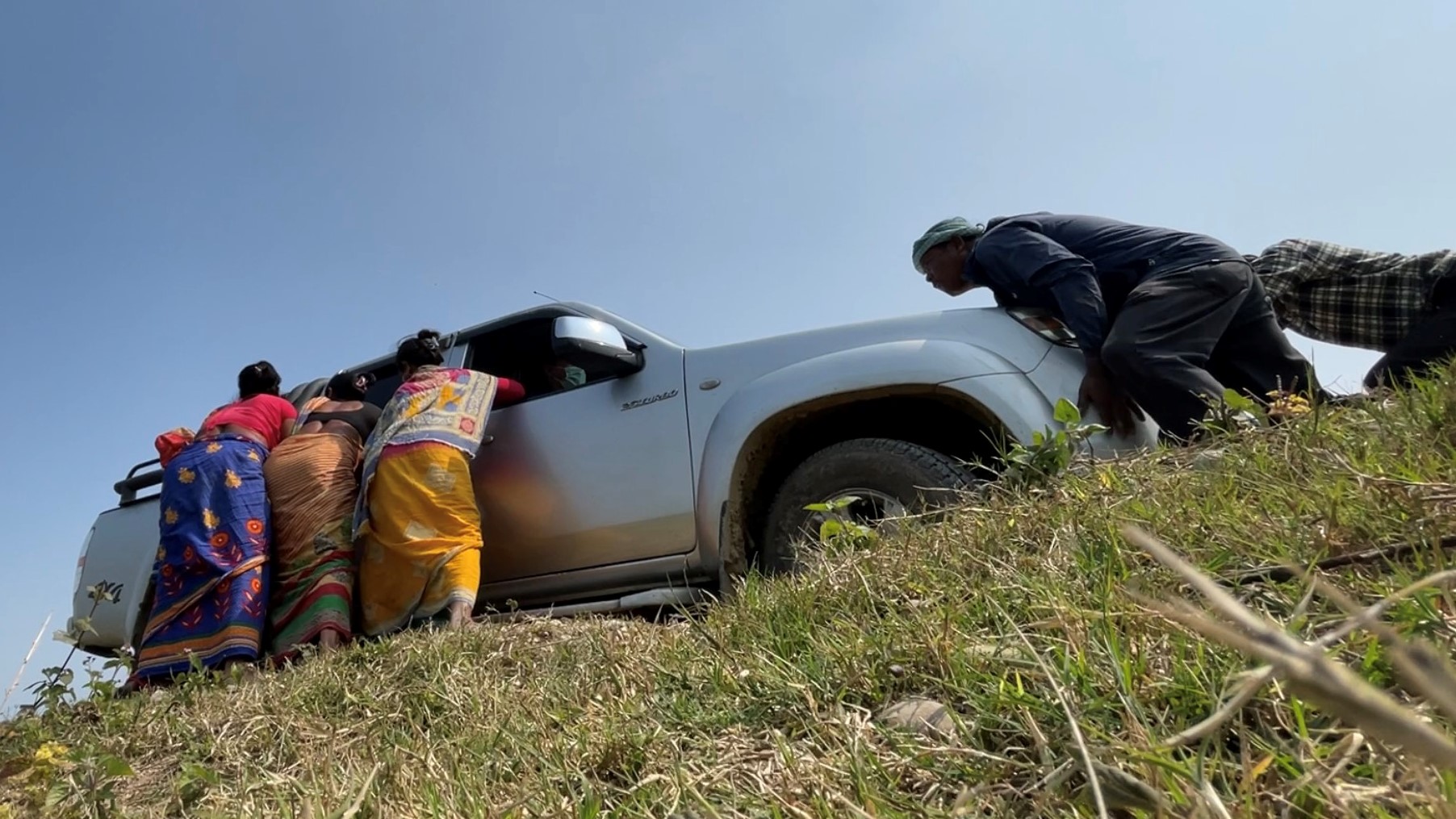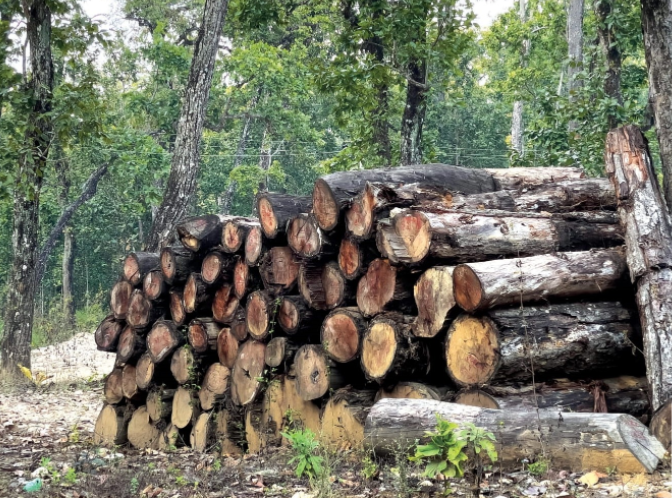I and Pratik Rayamajhi, our photojournalist, were assigned to cover progress on the much-talked Kathmandu-Nijgadh expressway. After quick planning and some basic research, I drew a route map with important landmarks. We would be roughly traveling via the Tinkune-Khokana-Hetauda-Makwanpurgadhi-Hetauda-Nijgadh-Kathmandu route.
We had planned on taking on a motorcycle but had to switch to a Mazda 4×4, which turned out to be a wise move: we would otherwise have had to return from halfway. (A piece of advice: If you’re traveling off-road on assignments, better take a four-wheeler, which is more comfortable, less tiring and easily accommodates luggage, allowing you to concentrate on your work.)
“A part of the expressway lies near my village in Makawanpur district,” our driver Som Moktan replied when I asked him if he had traveled via the proposed route. This was a huge relief, as we had no proper direction in mind. We had to travel on main roads as well as multiple small tracks to reach the fast track sites. Without Moktan, our three-day trip could easily have dragged on to a week.
At 8 am on February 15, we started our journey from our office at Tinkune and headed to Khokana. Along with clicking on-site photos in Khokana and Bungmati, we spoke to locals too. They were cooperative and helped us locate the proposed track and shared some of their concerns.
Nagesh Dangol, an elderly in Khokana who ran a small shop in his own house, took us to the Sikali Temple, which the Nepal Army had previously planned on razing to make way for the fast track. The plan was withdrawn following protests. Bungmati and Khokana are home to Hindu and Buddhist socio-cultural values and local arts and crafts industry, Dangol said. This heritage is sustained by the locals who still practice and celebrate ancient rituals and festivals. The expressway’s construction through these areas would destroy several heritage sites and ancient settlements—and with them, Dangol added, a whole civilization.

In 1996, King Birendra had proposed Khokana as a UNESCO World Heritage Site. In the proposal, Khokana was described as a unique village, a model of a medieval settlement pattern with a system of drainage and chowks. The local mustard-oil seed industry was called the ‘living heritage’ of the village.
We knew that many high-profile people were buying land in Khokana and Bungmati and pushing up their value with the help of realtors. Some Khokana residents also accused the activists and leaders who were campaigning against the fast track, for allegedly succumbing to greed and selling their lands. “Nepal Man Dangol, one of the leaders of a struggle committee against the fast track, has double standards. He sold his plot to the army and bought off properties close to the project site,” said a local woman who declined to give us her name.
After spending almost three hours at Khokana, we had a refreshing lunch at a local hotel. Next stop: Hetauda.
We took the Dakshinkali-Kulekhani route, a graveled road that nonetheless made for a comfortable trip. Moktan shared his driving experience and incidents throughout the way, preventing us from falling asleep.
We stopped at Kulekhani for a quick snack at 3 pm. There, we were in for a shock.
Even though we had planned our journey in a rush, a day earlier I had informed the spokesperson of Nepal Army Narayan Silwal that we were on a reporting assignment to cover the fast track. He had asked me to postpone our plan. I declined.
When we stopped at Kulekhani dam, army officials asked us why we had come to Kulekhani when we had planned on traversing the fast track route. It felt like the army had been tracking us. I started feeling a bit insecure from that point.
Yet I could still savor the majestic view of Kulekhani, along with sumptuous local fish.
 Kulekhani, Makwanpur.
Kulekhani, Makwanpur.
As we resumed our journey, I and Rayamajhi, the photographer, googled hotels in Hetauda. We surfed for a while but could not decide where to stay.
The first thing we did upon reaching Hetauda was look for hotels. It was already 7pm and we were tired. We picked a random hotel at Hetauda Chowk. Rayamajhi edited the photos and sent them to the office while I enjoyed the night-view from our balcony. After our 9pm dinner, we slept peacefully as we had to wake up early the next day to visit Makawanpurgadhi to study tunnel-work on the fast task.
Early at 6 am, Moktan woke us up, and we headed to Makawanpurgadhi. After traveling for two hours off-road, we reached the site and observed the tunnel work at Lendada. There, we interacted with workers, locals, and representatives at the ward office.
“Not only will the fast track improve our access to hospitals and schools, we will also be able to build more of them right here in our own village,” said Biru Tamang, a Lendanda villager. When I told him that the fast track would in fact not touch the village, directly or indirectly through auxiliary routes, he started getting a touch angry. He then accused ward officials for giving false hope to villagers.
According to the Nepal Army, for every Chinese worker employed on the fast track, there are three Nepalis employed. Chinese workers, moreover, are said to be imparting useful skills to their local counterparts. But the ground reality was different. “Although this mega project has come to our village, we are not getting the promised jobs,” says Dinesh Moktan of Bakaiya Rural Municipality in Makawanpur. “We asked the army for more local participation, but our plea was ignored.”
Throughout the journey, we also witnessed many violations of the Environmental Impact Assessment (EIA) report. Ram Bahadur Waiba, a resident of Bandarekholchha, was angry about indiscriminate felling of trees. The stumps of freshly cut trees were before our eyes, and Waiba, despite the language barrier, was demanding an explanation from a Chinese worker.
“They [Chinese workers] have chopped down almost a dozen trees for which they have no permit,” Waiba told us. There was an army camp nearby to listen to the concerns of those living in and around the project site. But Waiba said the army had ignored their complaints.
It was a clear case of the project contractor violating the EIA report. The army had already cut down the required number of trees in the area to make way for the fast track. Felling more trees went against the EIA mandate. The residents of Bandarekholchha told us that neither they nor the forest department was informed before more trees were axed.
Felled logs stacked at Budune, Makwanpur.
Our next stop was Budune, our driver Moktan’s village. We reached Budune at noon and had lunch before clicking photos of the track.
Moktan introduced us to his friends, who further outlined the locations and shared their concerns over the project. Locals of the Tamang settlement often felt uncomfortable when I approached, but as soon as Moktan explained our intent in his language, they would cooperate. Common language is a big connector, I felt.
As we were taking the photos of the hills, some local Nepal Army again officials started questioning us. They said we had no permit to take photos, as ‘the fast track belonged to the army’. We argued that the army team was obstructing the work of journalists. I was afraid that if I hesitated even for a bit with my answers, our cameras would be snatched and the photos deleted.
Our team was repeatedly accosted and questioned by the army in the course of reporting at fast track sites. They demanded a permit from army headquarters to take photos at some sites—all public places.
We then sent the photos to our office and headed to Nijgadh, our last destination.
It was already 10 pm when we reached Nijgadh. Again, in a hurry, we looked for a lodge, had our dinner, and exhausted, quickly hit the sack. Due to the covid restrictions, there was no chance of visiting the nearby market that was allowed to open only till 9.30 pm.
With no deadline pressure on the third day, we woke up at 8 am and proceeded to the fast-track entry point. Unfortunately, the army didn’t allow us into the area. We tried our best to convince them, but to no avail and had to return empty-handed.
But we were in Nijgadh and there was no way we would return without visiting the proposed area for the Nijgadh International Airport.
After a five-km ride via a graveled road amid the dense Nijgadh forest, we reached the dirt-poor Tangia Basti, a village with around 2,000 households. There was no electricity, no drinking water, and no proper transport. The local school taught students out on the open.
A team under former Prime Minister Madhav Kumar Nepal had visited the village a couple of days earlier. An elderly local, Harihar Gole, said the politicians were in favor of shifting the village in lieu of the airport that was to be built there. As such, the village had been kept in a limbo. After decades of promises, neither the airport nor development arrived.
We had our breakfast in the village and talked more to locals. They suggested we visit another nearby village—Kakadi—where the Army had planted trees in compensation for the ones that had been felled during the fast track construction.
We were now happy and relaxed as we would soon be returning home. But our relief didn’t last long. Near Kakadi, our Mazda got stuck, and we were unable to take it even after a couple of hours of relentless effort. Some local farmers pushed the vehicle, too, but again fruitlessly. They suggested we walk to the nearby village, which was two kilometers away, and hire a tractor to pull it out.
 Villagers helping to push our stuck Mazda.
Villagers helping to push our stuck Mazda.
I and Rayamajhi, hungry and tired, did accordingly. The ride back to the spot atop a tractor was a horrendous experience: it literally shook every part of our body. But our dying energy was soon revived when our Mazda was finally pulled out of the ditch. After thanking the villagers, we returned to the Mahendra highway and headed to Pathlaiya.
There we had a refreshing late lunch before rushing to Kathmandu.
Moktan took a shortcut, connecting to Lalitpur’s Chapagaun. After a whistle-stop tour, we had now finally arrived at our final destination: our Tinkune office. I handed over the car keys and came home for some much-needed rest.
Departure route:
Tinkune-Bungmati-Khokana-Dakshinkali-Kulekhani-Hetauda-Bakaiya-Makwanpurgadhi-Hetauda-Nijgadh
Arrival route:
Nijgadh-Tangia Basti-Kakadi-Nijgadh-Pathlaiya-Hetauda-Baguwa-Tinpane-Chapagaun-Tinkune













